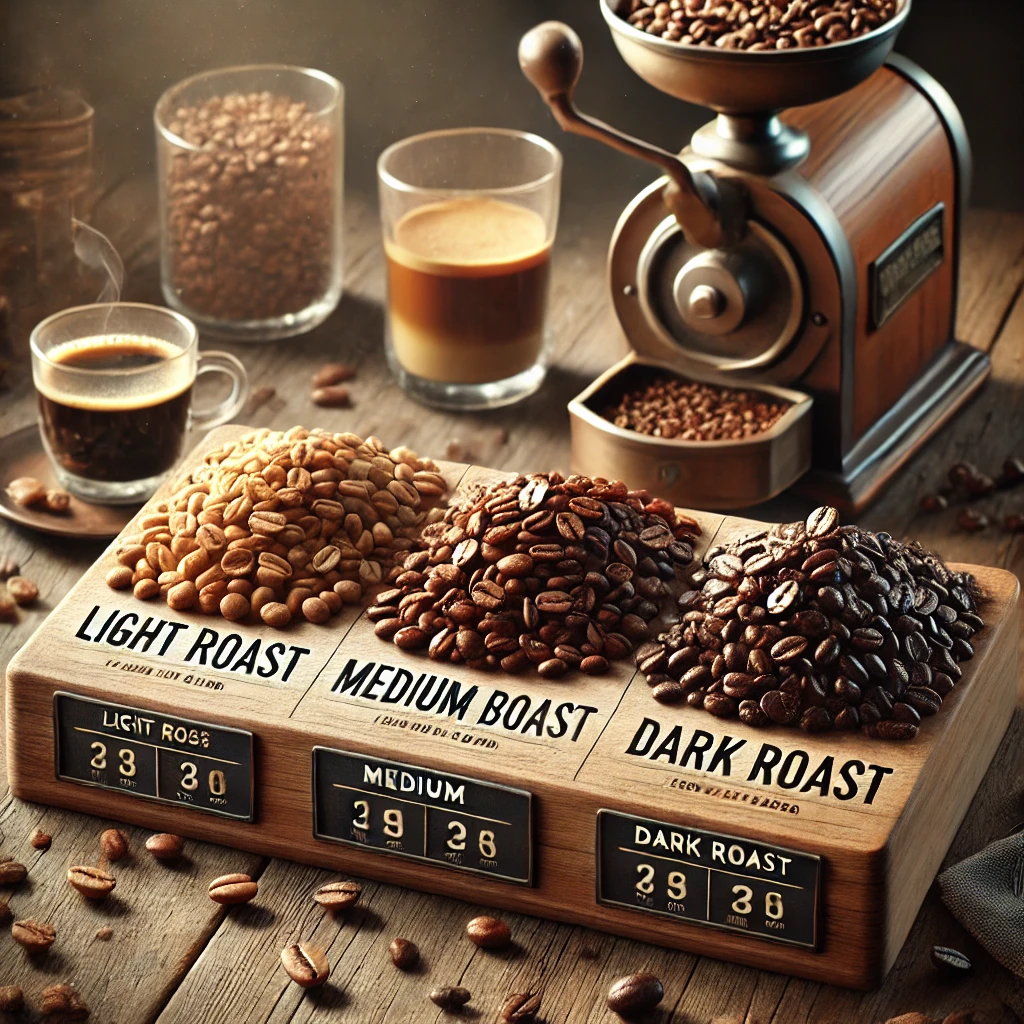The roasting process is one of the most crucial steps in coffee production. It transforms green coffee beans into the aromatic, flavorful coffee we love. The roast level significantly impacts the taste, acidity, bitterness, and body of the final brew.
In this guide, we’ll break down the different roast levels, how roasting affects coffee flavor, and how to choose the best roast for your taste.
1. What Happens During Coffee Roasting?
When green coffee beans are roasted, they go through chemical reactions that develop their flavor:
🔥 Moisture Evaporation – The beans lose water and become lighter.
🔥 Caramelization – Sugars break down, creating sweet, nutty, or caramel flavors.
🔥 Maillard Reaction – Proteins and sugars interact, developing rich, complex flavors.
🔥 Oil Development – At darker roasts, oils appear on the surface, adding richness.
2. Coffee Roast Levels and Their Flavor Profiles
| Roast Level | Color | Flavor Profile | Acidity | Bitterness | Best For |
|---|---|---|---|---|---|
| Light Roast | Light brown | Fruity, floral, tea-like | High | Low | Pour-over, drip coffee |
| Medium Roast | Medium brown | Balanced, nutty, caramel | Medium | Medium | Drip coffee, French press |
| Dark Roast | Dark brown | Bold, smoky, chocolatey | Low | High | Espresso, milk-based drinks |
3. Breakdown of Each Roast Level
☕ Light Roast
- Retains the most original flavors of the coffee bean.
- Bright, crisp, and high in acidity.
- Common names: Cinnamon Roast, City Roast, Half City Roast.
- Best for: Pour-over, Chemex, and drip coffee.
☕ Medium Roast
- Balanced acidity and body, with caramel and nutty flavors.
- The most versatile roast, enjoyed by many coffee drinkers.
- Common names: American Roast, Breakfast Roast, City Roast.
- Best for: Drip coffee, French press, AeroPress.
☕ Dark Roast
- Bold, rich, and smoky with less acidity.
- Oils begin to appear on the surface of the beans.
- Common names: French Roast, Italian Roast, Espresso Roast.
- Best for: Espresso, cappuccino, latte.
4. How Roasting Affects Caffeine Content
Many people assume darker roasts have more caffeine, but the opposite is true.
🔹 Light roast coffee retains more caffeine because it spends less time in the roaster.
🔹 Dark roast coffee loses some caffeine due to the longer roasting process.
However, the difference is small and depends on how coffee is measured (by weight vs. volume).
5. Choosing the Best Roast for Your Taste
✔️ If you enjoy bright, fruity flavors → Choose Light Roast.
✔️ If you want a balanced and smooth coffee → Choose Medium Roast.
✔️ If you love bold, smoky, rich coffee → Choose Dark Roast.
Final Thoughts
The coffee roasting process plays a huge role in the flavor and aroma of your coffee. Understanding the different roast levels helps you choose the best coffee for your taste preferences. Whether you prefer a bright light roast, a balanced medium roast, or a bold dark roast, there’s a perfect coffee for every coffee lover.
